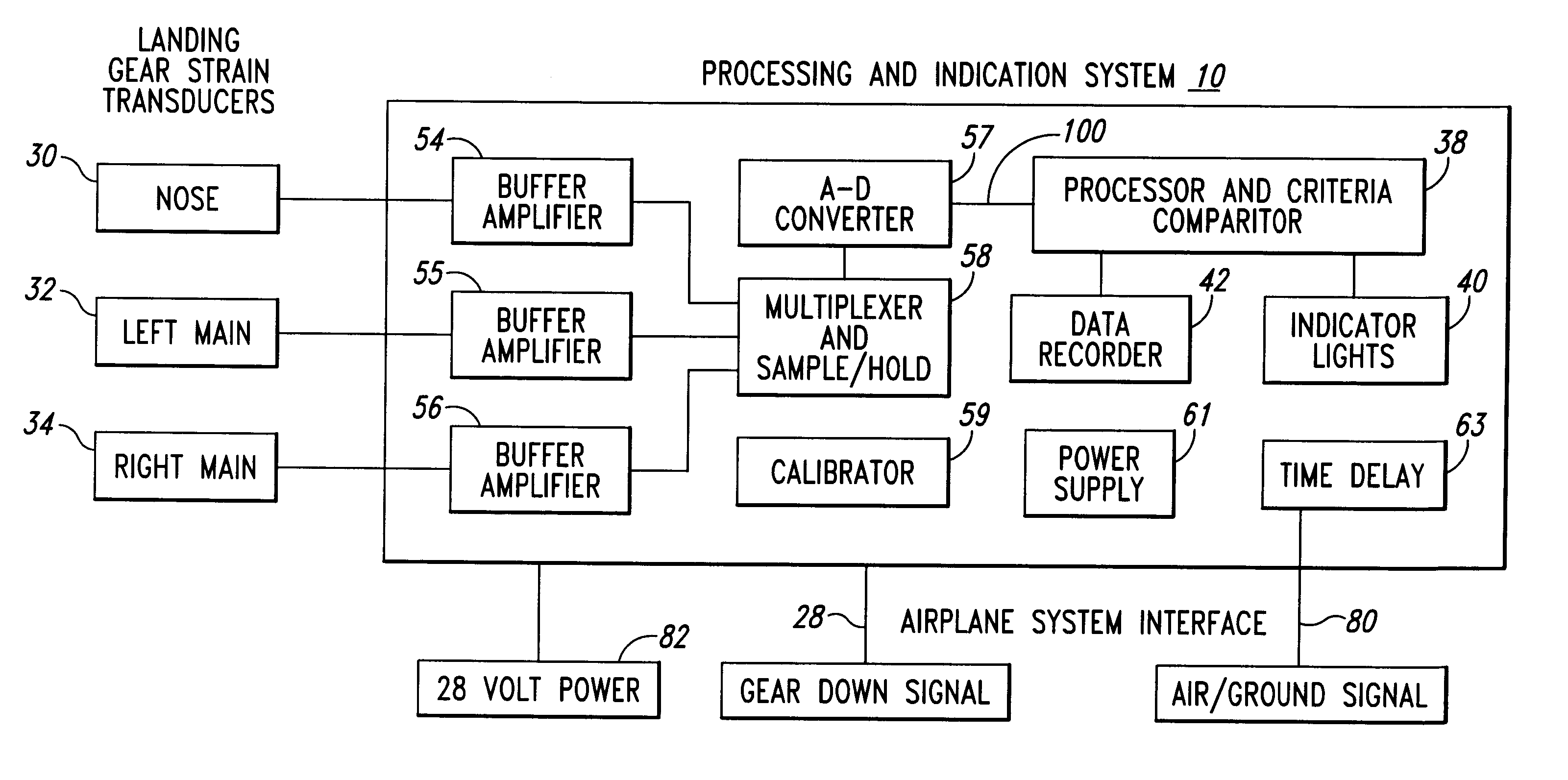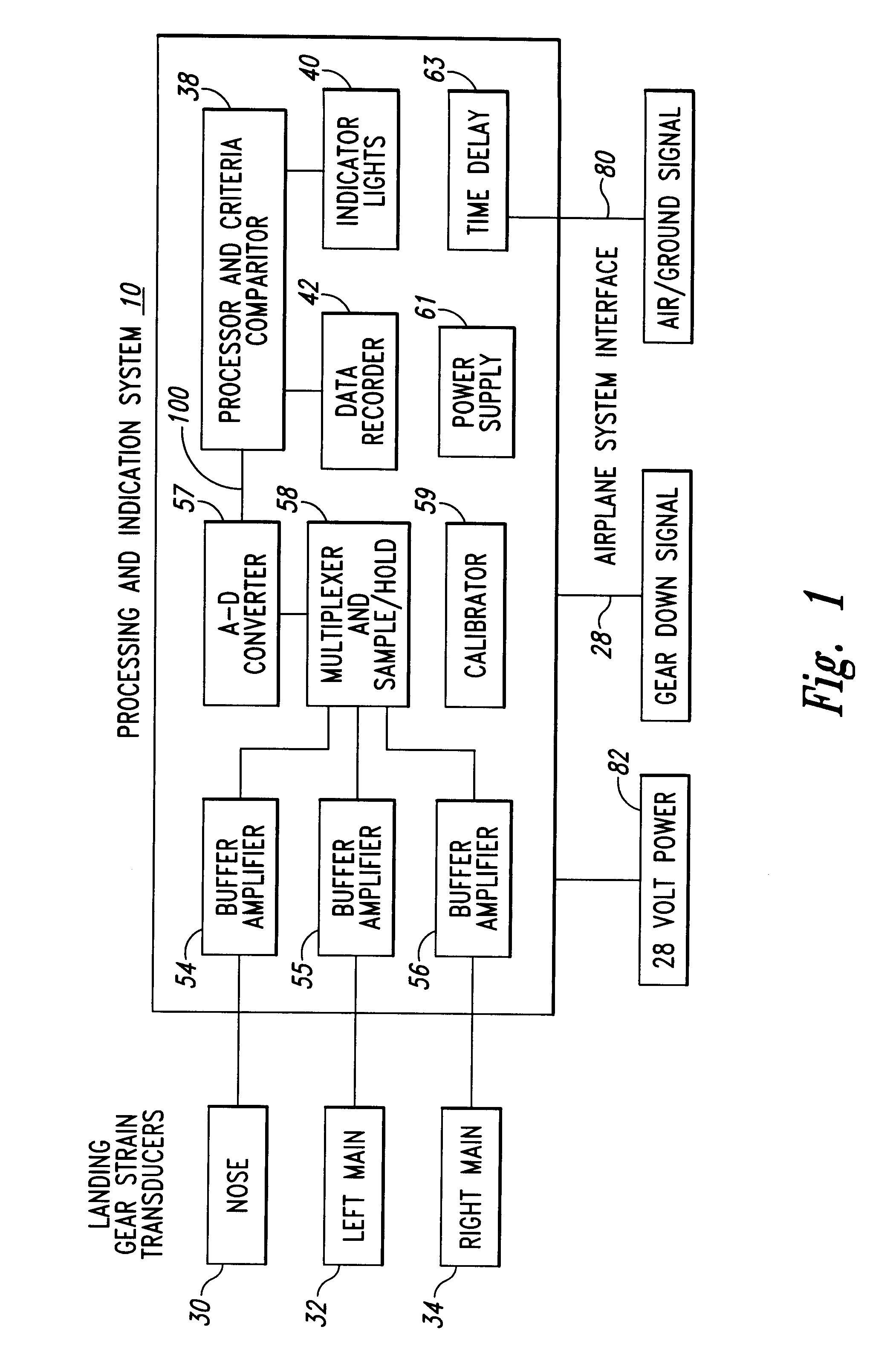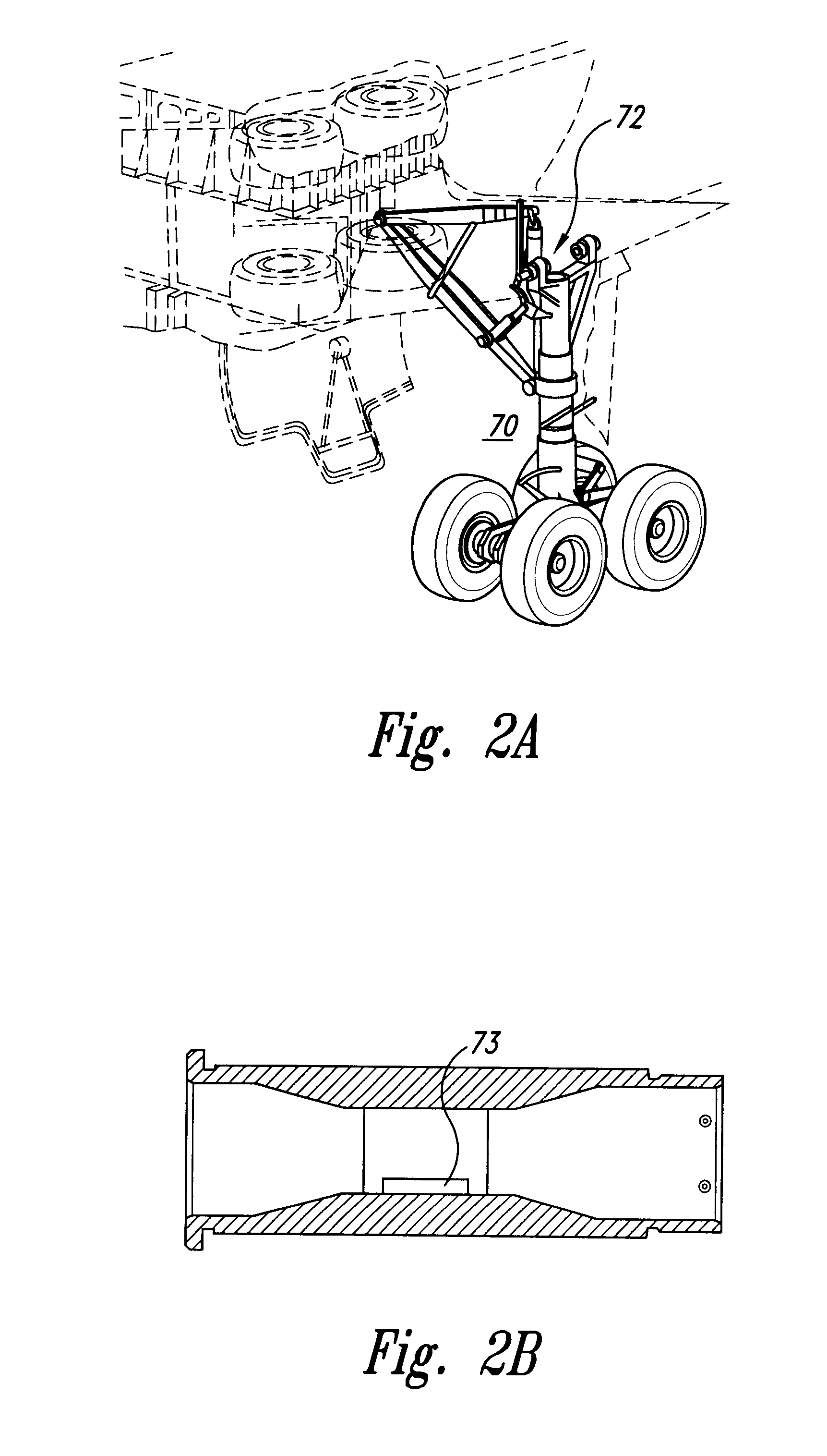Airplane hard landing indication system
a technology of hard landing and indication system, which is applied in the direction of aircraft indicators, alighting gear, skis/runners, etc., can solve the problems of difficult to understand the dynamics of hard landing, failure of attempts to utilize kinetic measurements,
- Summary
- Abstract
- Description
- Claims
- Application Information
AI Technical Summary
Benefits of technology
Problems solved by technology
Method used
Image
Examples
Embodiment Construction
The present processing and indicating system 10 can be sized for any number of transducer inputs, the exemplary embodiment described hereinafter and shown in FIG. 1 comprises an example of a three-transducer system.
The processing and indication system 10 for indicating hard landings comprises the following components as shown in FIG. 1. Components 54, 55 and 56 are buffer amplifiers, one for each of strain transducers 30, 32 and 34. Component 58 is a multiplexer and sample / hold device. Component 57 is an analog to digital (A-D) converter. Component 38 is a processor and criteria comparator computing unit. Component 42 is a data recorder which records the data and also stores the programming for the processor and criteria comparator 38. Component 40 is a set of indicator lights, one for each landing gear, that shows if the force criteria has been exceeded, and a light indicating that the system has been calibrated and is functional. Component 59 is a calibrator that checks the system...
PUM
 Login to View More
Login to View More Abstract
Description
Claims
Application Information
 Login to View More
Login to View More - R&D
- Intellectual Property
- Life Sciences
- Materials
- Tech Scout
- Unparalleled Data Quality
- Higher Quality Content
- 60% Fewer Hallucinations
Browse by: Latest US Patents, China's latest patents, Technical Efficacy Thesaurus, Application Domain, Technology Topic, Popular Technical Reports.
© 2025 PatSnap. All rights reserved.Legal|Privacy policy|Modern Slavery Act Transparency Statement|Sitemap|About US| Contact US: help@patsnap.com



